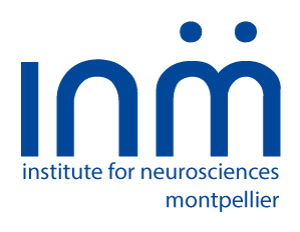IRDs are neurodegenerative disorders of the retina with a prevalence of 1/3000 in industrialized countries. They are progressive genetic diseases that lead to dysfunction and subsequent cell death, particularly of photoreceptors (light-sensing cells) and/or the retinal pigment epithelium (supporting tissue). These diseases can result in isolated or syndromic retinal disease, and all modes of hereditary transmission are possible (for more details see: https://sites.google.com/view/retgen or https://maolya.chu-montpellier.fr/fr/). IRDs are divided into clinical subgroups, with retinitis pigmentosa (RP) being the most common. Symptoms of RP include night blindness and loss of peripheral visual field that results in difficulties with mobility. RP arises from the dysfunction of rod photoreceptors, whose cell death is accompanied by pigment deposits typically localized in the peripheral retina. Less common forms of IRDs are macular dystrophies, such as Stargardt disease, which are characterized by diverse lesions affecting the macula, the central region of the retina crucial for precise vision such as reading, writing, and facial recognition. Therefore, there is a clinical diversity associated with IRDs as well as a wide genetic diversity, with over 280 implicated genes encoding proteins essential for the proper function of retinal cells and vision. Moreover, genotype-phenotype correlations can be complex because alterations in the same gene sometimes give rise to diverse clinical forms. To date, approximately one-third of patients remain without a molecular diagnosis.

Our mission is to establish precise clinical diagnoses, provide genetic diagnoses, establish genotype-phenotype correlations, resolve undiagnosed cases by identifying new genes responsible for the disease, include patients in ongoing clinical trials, and conduct medical follow-up. In order to successfully carry out our missions, we are an active participant in national (Sensgene) and European (ERN-EYE) networks, which bring together reference centers dedicated to these rare diseases.
Recent publications
Fardeau C et al., Clin Genet, 103: 453-458, 2023
Fardeau C et al., Int J Mol Sci, 23: 7868, 2022
Meunier et al., Ophthalmic Genet, 43: 470-475, 2022
Mairot K et al., Int J Mol Sci, 22: 12642, 2021
Bocquet B et al., Ophthalmol Sci, 1: 100052, 2021
Meunier et al., Sci Rep, 11: 18703, 2021
Jamilloux et al., J Clin Immunol, 41: 1671-1673, 2021
Meunier et al., Retina, 41: 1771-1779, 2021
Fundings


















